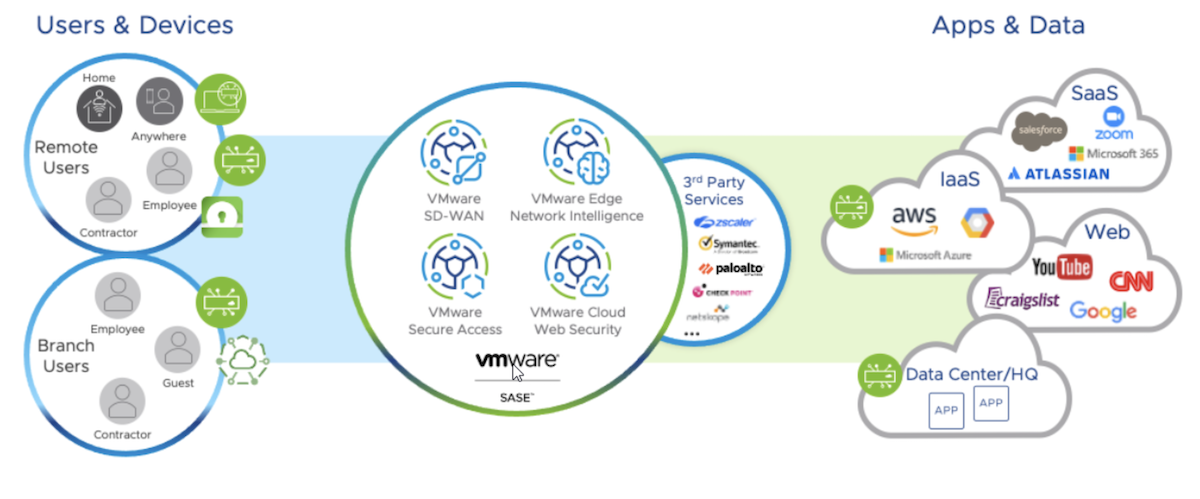What do you think of when you hear about the company Riverbed? More likely than not, you associate them with being a leading WAN optimization vendor. If you are a bit more in tune with their product lines you might also recognize their efforts around application visibility and performance as well. Riverbed, interestingly enough, is also the corporate sponsor of the popular packet analyzer tool Wireshark. And last, but certainly not least, Riverbed has joined an increasingly crowded group of vendors developing an SD-WAN solution. This last part is going to be the focus throughout the course of this tech talk series.
Before going to far into Riverbed’s solution, we probably should talk about the problem.
So what exactly is SD-WAN and what problem is it trying to solve?
That’s a somewhat complicated question and something that will likely be further defined between the time this article is written and the time that you read it. A very brief summary is that SD-WAN promises to be the next generation of WAN technology. It’s ultimate aim to abstract configuration complexity by looking at a WAN holistically and making the best decision possible regarding path selection. These path selection decisions will be based off of deep level of application intelligence, real time analysis of network performance, and a defined set of policies determined by the network operator. All of this can be contrasted to current generation networks which typically make routing decisions based off of destination prefix and locally significant (and usually static) views of network performance. The promise of SD-WAN is a huge step forward in the deployment, configuration, and management of WAN networks when compared to the capabilities we have today.
As stated previously though, the group of vendors looking to participate in this market is growing rapidly and they range from networking giants to scrappy start-ups looking to make a name for themselves. With so much noise being made by so many companies looking to grab your attention, feature differentiation is what is going to make an SD-WAN provider stand out.
What does Riverbed provide that differentiates it from the majority of the SD-WAN market?
This one is actually pretty easy to answer and the answer is sourced in what they do best. Riverbed has spent over a decade developing ways to make WAN traffic move across networks more efficiently. They do this through multiple means but the most important in reference to this discussion is the ability to see deeply into application traffic and make decisions on how to optimize those traffic flows. Riverbed has a proven history of being a leader in this field and that established knowledge gives them an advantage over products and vendors that need to develop that ability from the ground up.
The other advantage that really stands out is the already existing customer base that have SteelHead WAN optimization appliances installed at the WAN edge. Having a Riverbed hardware appliance already located in the correct position on the network will potentially make the transition to SD-WAN even easier for existing customers and is a compelling story for customers who already trust Riverbed for their WAN optimization requirements.
Does it make sense to choose a WAN/Application optimization company, Riverbed in this case, as an SD-WAN vendor?
On the surface there are some attractive components that WAN optimization vendors bring to the table when it comes to SD-WAN technology. Application visibility is the key one and this really can’t be emphasized enough. One of the core tenants of SD-WAN networks is greater application awareness and it is this awareness that is the enabler for so many of the other advanced features to build upon.
In addition to application awareness, effective forwarding of traffic is another key feature that Riverbed already has sorted out. QoS is something that is traditionally a very difficult concept to get right in our current generation of networks but Riverbed has a robust solution built upon, you guessed it, their deep level of application visibility. In addition to QoS, caching and compression are currently heavily utilized by SteelHead to reduce the overall bandwidth required to optimally deliver WAN traffic.
In all fairness, there are some gaps between producing a WAN optimization solution like Riverbed’s SteelHead and producing an SD-WAN product which can’t be ignored. Like all of the vendors entering this space by building on top of an existing feature set, there are/have been a number of technologies that need to be integrated into that existing product to make SD-WAN style features a reality. For example, making intelligent routing decisions across multiple potential paths are not something that SteelHead appliances are having to solve today. Visibility and awareness of packet level performance, for the purposes of appropriately steering traffic, has simply not been a requirement for the SteelHead line of products. Additionally security, while certainly a feature of the SteelHead product line, doesn’t currently have to address the challenges of overlay networking/tunneling, PKI, and traffic isolation inherent with building a fully featured SD-WAN solution.
With this in mind, it’s important to take a look at how Riverbed has been addressing some of those concerns. Generally speaking, there are two possible ways to bridge a technology gap…
Do you build or do you buy?
It’s an age old question with pros and cons existing on both sides of the equation. Developing the solution internally gives you greater control end-to-end but it requires you to learn lessons the hard way. Buying to bridge the gap speeds up the process by bringing that knowledge in through acquisition but leaves you with the challenge of integrating what could be totally disparate development efforts.
Riverbed’s approach to this challenge has apparently been to do both. Starting in 2015, Riverbed has publicly been working to develop SD-WAN functionality with the intent of adding on to their existing line of WAN optimization products. They code-named this effort Project Tiger and from information available publicly it looks like they are taking some novel approaches to OS development centered around containerization. However, early in 2016, Riverbed surprised most of the industry by buying a German SD-WAN vendor named Ocedo. There is plenty of speculation as to the reasoning behind the acquisition but from my vantage point this appears to be a move to accelerate bridging the technology gap through technology acquisition and brining a product to market sooner rather than later. When looking at the acquisition through the lens of a containerization based OS, it’s hard not to speculate that the OS work done as part of Project Tiger is going to play a significant role in easing the integration challenges presented by the acquisition of Ocedo.
Final Thoughts
The Riverbed SD-WAN has some good things going for it from the start and that alone makes it worth a consideration if you are looking for an SD-WAN solution. Here are the things I am going to be paying attention to over the next few weeks/months:
- The key thing I am watching for is news on the integration between the Ocedo solution and Project Tiger. If done well this could vault Riverbed towards the top of a very crowded market.
- There’s a clear and compelling story built around the existing SteelHead customer base but I’m also interested to see what features Riverbed brings to the table to attract new customers who may not already have an investment in Riverbed tech and are looking at SD-WAN solutions.
- The containerized OS piques my interest because of the potential for not only internal integrations but possible integrations with 3rd party solutions. The NFV/service chaining potential is significant if implemented well and in a way others can integrate with.
Jordan Martin is a Principal Consultant of datacenter technologies based out of eastern Pennsylvania. His blog can be found at http://www.JordanMartin.net/ and followed on Twitter as @BCJordo.
 This post is part of the Riverbed SD-WAN Tech Talk series. For more information on this topic, please see the rest of the series HERE. To learn more about Riverbed’s SD-WAN solutions, please visit http://Riverbed.com/sdwan.
This post is part of the Riverbed SD-WAN Tech Talk series. For more information on this topic, please see the rest of the series HERE. To learn more about Riverbed’s SD-WAN solutions, please visit http://Riverbed.com/sdwan.





